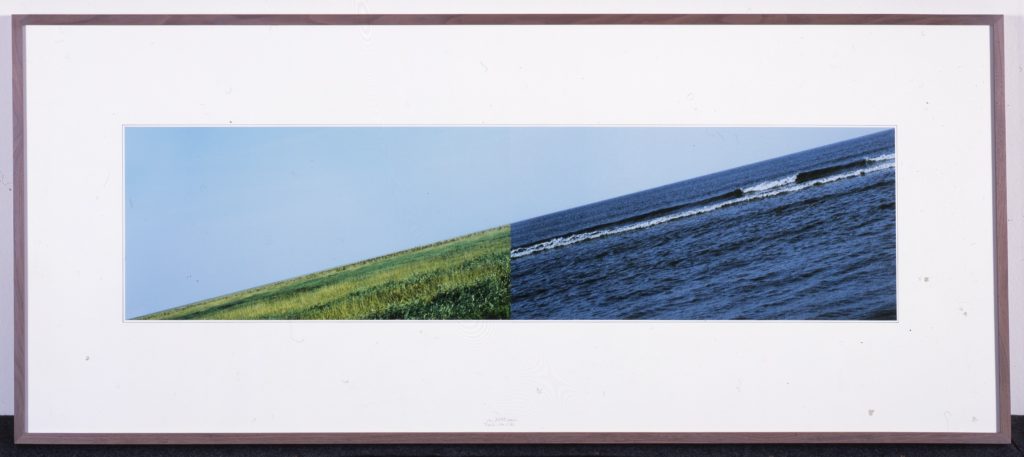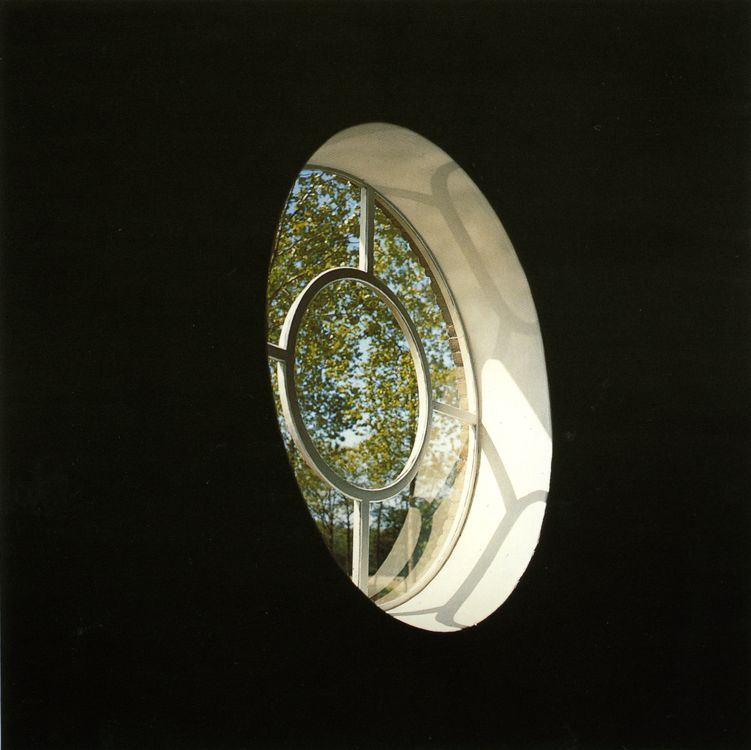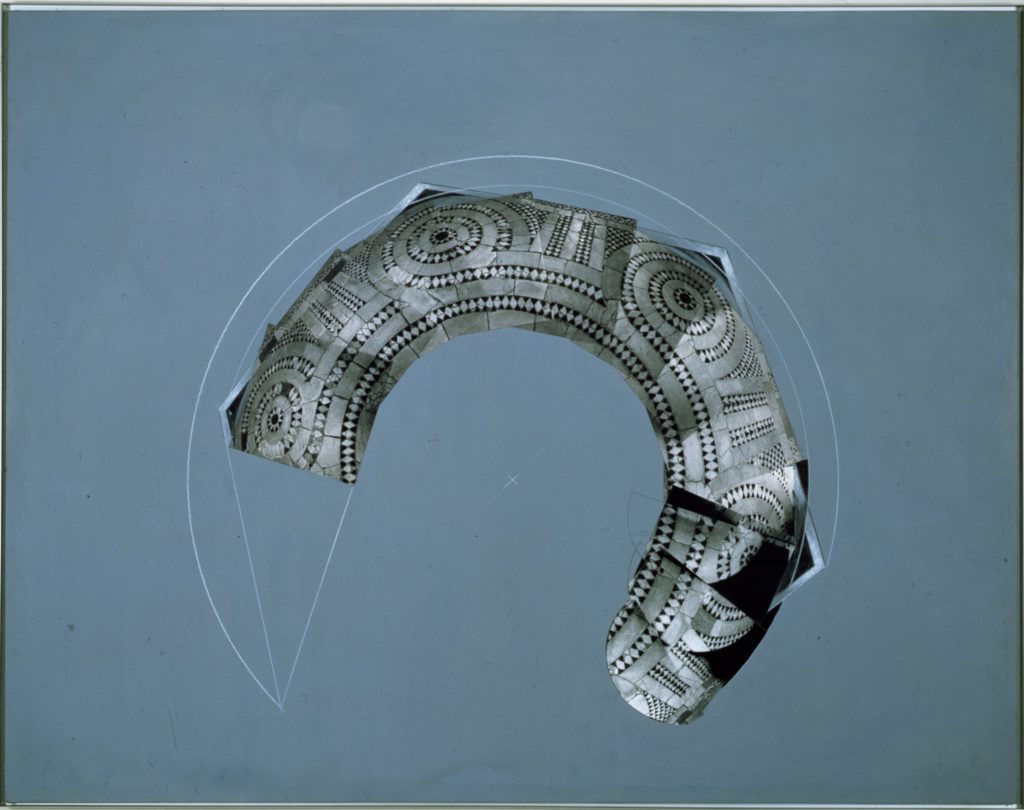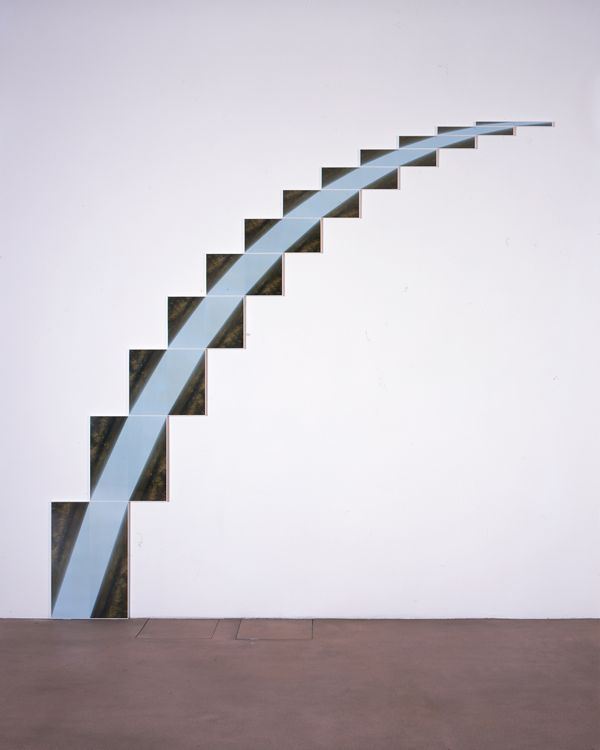Jan Dibbets
The analysis of space, light, and the characteristics of perception are fundamental to the art of Jan Dibbets. Since the late 1960s, when he began to create works in the context of Conceptual art, he has used photography as a medium, but in no way can he be defined as a photographer. For Dibbets, photography is purely a tool, and many of his works seem to contradict the notion of the visual pyramid that underpins the principles of photographic technique. Denying its claim to objectivity or its potential use as documentation or information, the artist sees photography as an agent of transformation. Working in systematic series, sometimes devoting up to ten years to a single family of works, the artist experiments with altering three-dimensional illusion, fragmenting exposure times, or even multiplying viewpoints. Freed of categorization, Dibbets’s investigations succeed in transforming images of reality into abstract propositions, while retaining a visual connection with reality. According to the artist’s statements, his work is closely linked to the history of painting, with particular attention to Dutch tradition, beginning with seventeenth-century landscape painters.
The horizon—a hallmark of Dutch painting as a dominant element of the local landscape—is one of the features that decisively mark Dibbets’s work. In many of his works, he examines its value as a motif related to vision, perceivable and definable only as related to a precise viewpoint. In the series Comets, to which Comet Land/Sky/Land 6˚-72˚, 1973, belongs, Dibbets delineates the horizon according to a perspective that is capable of including both proximity and distance, with a dynamism that cannot be perceived by the human eye. Created by mounting the camera on a tripod and rotating it gradually by a few degrees with each shot, the work is composed of twelve photographs that focus on the meeting of sky and sea, arranged in such a way that the proportions and cut of the first photograph mathematically determine the subsequent sequence. The horizon is also protagonist of the most recent series New Horizon to which the 2007 work Land – Sea in the collection belongs. In this case, the image allows the viewer to perceive two juxtaposed views of the same landscape, showing what actually exists both in front and behind.
Beginning in the 1980s, Dibbets began to focus on architecture and architectural details such as floors, ceilings, vaults, or windows. Numerous works explore each of the interiors he chooses, such as the floor of the Spoleto cathedral. Spoleto Floor, 1981, features a semicircular arrangement of a series of photographs related to details of the cathedral’s floor paving, developing an equivalence between the sequence and the basic principle from which it is derived. The images, square in format, are superimposed on one another so that for each photograph are visible some portions that are hidden in other photographs. Mounted on a painted board and contained within a designated outline, the images contradict the physicality of the floor. Instead of being flat and concrete, the floor becomes an abstract space, a circle suspended in the act of taking place or of infinitely expanding into the vortex of a spiral.
Windows—elements meant to channel light, or in the form of oculi whose shape or function is analogous to that of the eye—are another motif that has interested the artist for some time. Barcelona Window, 1989–90, belongs to a group of works inspired by the windows of a stable designed by Antoni Gaudì for Eusebi Güell in Barcelona. Seen from below, the outline of the window is photographed in a way that makes it resemble the wings of a butterfly.
The photograph that forms the basis of Tollebeek Spring II, 2000, was taken in a small Dutch village. A screen placed between exterior and interior, the window allows the viewer to partially glimpse the luxuriant nature outside, evoking a tension toward a space that is elsewhere, an ideal place that can be reached through the vision of the intellect. Photographic distortion makes the originally round opening elliptical and, as with other works in Dibbets’s series on windows, abstraction is accentuated by the juxtaposition of photography and the painted surface.
[MB]





